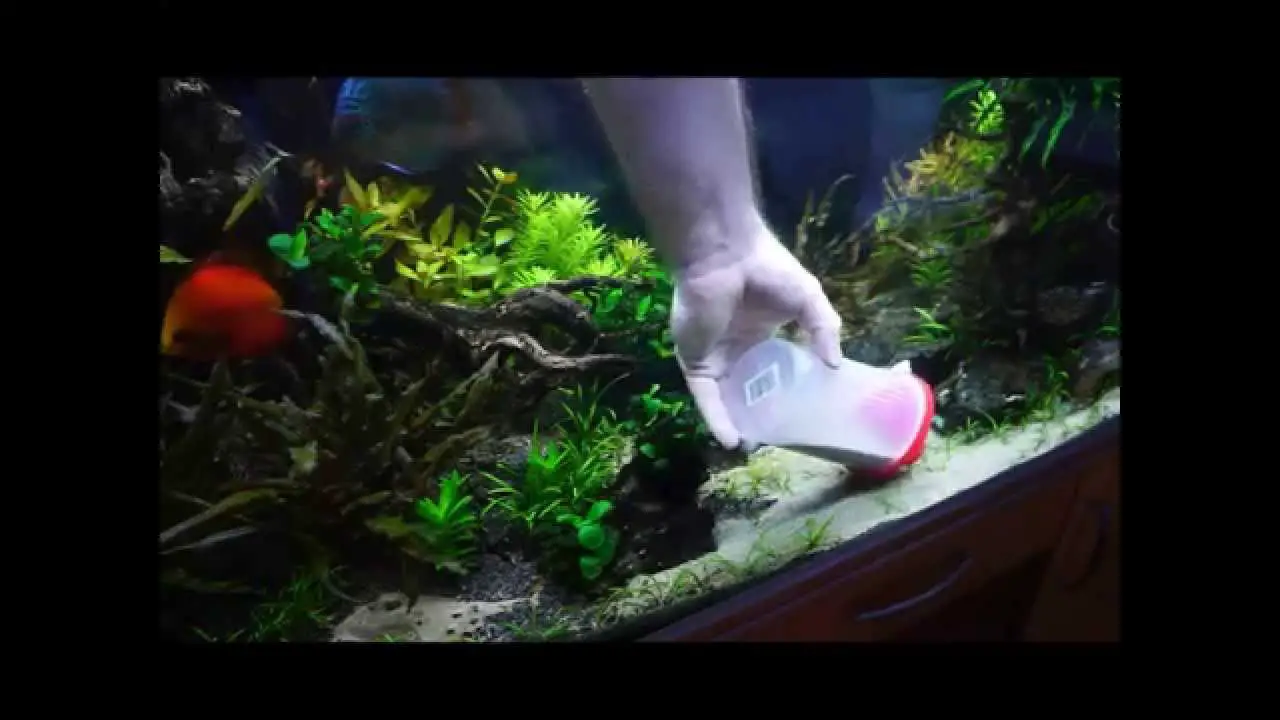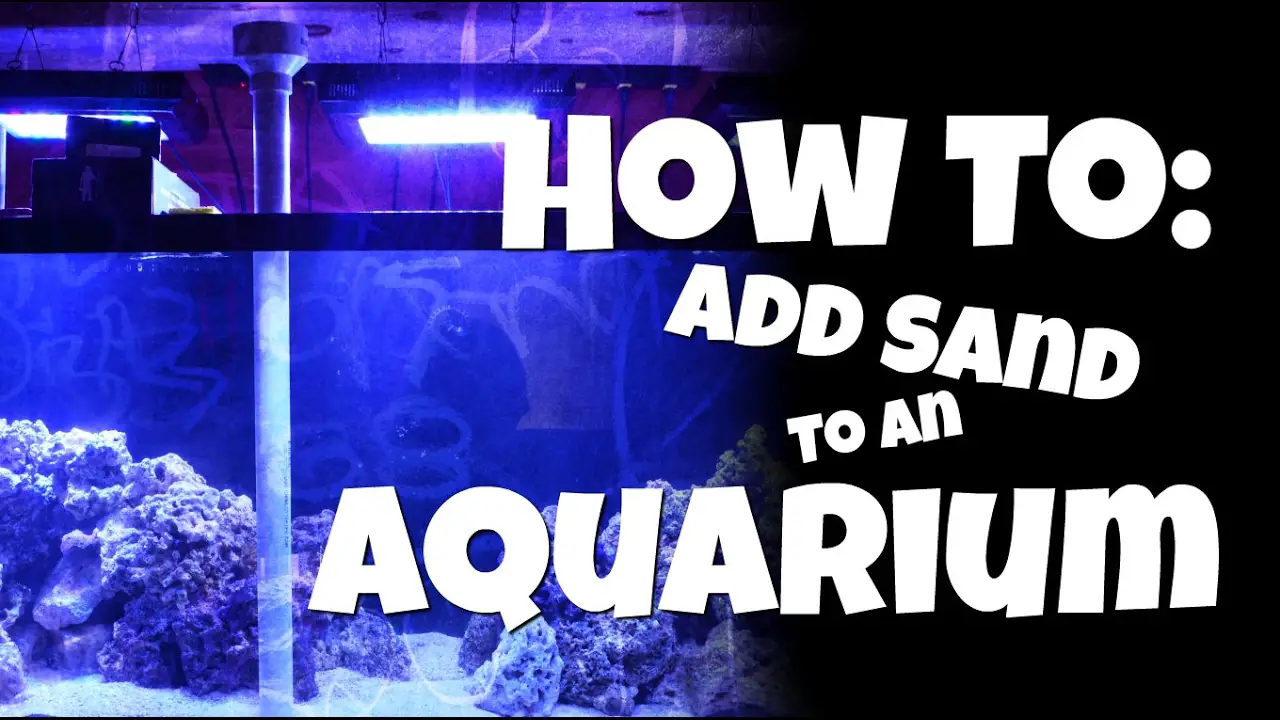Originally posted on May 18, 2023 @ 1:00 pm
Last Updated on 3 months by admin
Are you looking to enhance the beauty of your existing aquarium with sand? Adding sand to an aquarium not only adds aesthetic appeal but also helps to create a natural habitat for your aquatic friends. However, before you start pouring sand into your aquarium, there are a few essential steps you need to follow. In this article, we will guide you through the process of adding sand to an existing aquarium, ensuring that your fish and plants thrive in their new environment.
From selecting the right type of sand to preparing your aquarium for the addition, we’ve got you covered. Whether you’re a beginner or an experienced aquarist, our step-by-step guide will help you achieve the perfect sand bed for your aquatic pets. So, let’s dive in and learn how to add sand to your existing aquarium without any hassle.
- First, prepare the sand by rinsing it with clean water until the water runs clear.
- Next, turn off all aquarium equipment and remove any fish or plants from the tank.
- Using a scoop or your hands, carefully add the sand to the aquarium, making sure to distribute it evenly across the bottom.
- Once the sand is added, slowly fill the tank with water to avoid disturbing the sand.
- Finally, turn on all equipment and add your fish and plants back into the aquarium.

Adding Sand to Your Aquarium: A Step-by-Step Guide
Adding sand to your aquarium can be a great way to enhance its aesthetic appeal, but it can also benefit your aquatic pets by mimicking their natural habitat. However, it’s crucial to do it right to avoid harming your fish and other aquatic life. Here’s a step-by-step guide on how to add sand to your existing aquarium.
Step 1: Choose the Right Type of Sand
Not all types of sand are suitable for aquariums. You need to choose a sand type that won’t alter your water chemistry or harm your aquatic pets. Ideally, you should opt for sand that’s specifically marketed for aquariums. However, if you can’t find such sand, you can use pool filter sand or play sand that’s free of harmful chemicals.
Once you’ve obtained your sand, rinse it thoroughly to remove any debris or dust that could cloud your water. You can use a fine-mesh strainer or colander to rinse the sand until the water runs clear.
Step 2: Choose the Right Amount of Sand
The amount of sand you’ll need depends on the size of your aquarium and how deep you want the sand bed to be. Generally, you should aim for a sand bed depth of around 1 to 2 inches. You can use an aquarium sand calculator to determine how much sand you’ll need based on your tank’s dimensions.
Step 3: Prepare Your Aquarium
Before adding sand to your aquarium, you need to prepare it properly. Start by turning off all electrical equipment, including filters, heaters, and lights. Then, use a net or your hands to remove any debris or uneaten food from the substrate.
Step 4: Add the Sand
Once your aquarium is ready, it’s time to add the sand. Start by pouring the sand into a bucket. Then, slowly add the sand to the aquarium, using your hands or a clean tool to spread it evenly across the substrate. Be gentle to avoid disturbing any plants or decorations in your tank.
Step 5: Smooth the Surface
After adding the sand, use your hands or a tool to smooth the surface of the substrate. Make sure there are no air pockets or clumps of sand that could harm your aquatic pets.
Step 6: Refill Your Aquarium
Once you’ve added the sand, it’s time to refill your aquarium with water. Slowly pour the water into the tank, being careful not to disturb the sand bed. You can use a plate or bowl to diffuse the water and prevent it from disturbing the sand.
Step 7: Turn On Your Equipment
After refilling your aquarium, turn on your equipment, including filters, heaters, and lights. Allow the water to circulate for a few hours before adding any fish or other aquatic life.
Step 8: Monitor Your Aquarium
After adding sand to your aquarium, it’s essential to monitor it regularly to ensure it’s not causing any imbalances in your water chemistry. Check your water parameters, including pH, ammonia, nitrite, and nitrate levels, to ensure they’re within the safe range for your aquatic pets.
Step 9: Benefits of Adding Sand to Your Aquarium
Adding sand to your aquarium can offer numerous benefits, including:
– Mimicking the natural habitat of your aquatic pets
– Enhancing the aesthetic appeal of your aquarium
– Providing a natural substrate for plants to grow
– Creating hiding spots for shy fish
Step 10: Sand Vs. Gravel: Which Is Better?
When it comes to substrate for your aquarium, you may be wondering whether sand or gravel is better. Both have their pros and cons, but sand is generally a better option for aquariums with bottom-dwelling fish or plants that need a fine substrate. Gravel, on the other hand, is better for aquariums with fish that like to dig or move around the substrate.
In conclusion, adding sand to your aquarium can be a great way to create a natural and aesthetic environment for your aquatic pets. Follow the steps outlined above, and you’ll be well on your way to a beautiful and healthy aquarium.
Frequently Asked Questions
Adding sand to an existing aquarium can be a tricky task, especially if you are new to fishkeeping. Here are some common questions that people have when it comes to adding sand to an aquarium:
Question 1: How much sand do I need to add to my aquarium?
The amount of sand you need to add to your aquarium depends on the size of your tank. As a general rule of thumb, you should aim for about 1-2 inches of sand at the bottom of your tank. This will provide enough substrate for your aquarium plants to grow and thrive, while also giving your fish a comfortable place to swim.
It’s important to remember that adding too much sand can cause problems with your aquarium’s filtration system. If you add too much sand, it can clog your filter and create an unhealthy environment for your fish. So, make sure you measure carefully and only add the amount of sand that your tank can handle.
Question 2: How do I prepare the sand before adding it to my aquarium?
Before you add sand to your aquarium, you need to make sure that it’s clean and free from any harmful chemicals or contaminants. The best way to do this is to rinse the sand thoroughly under running water.
You can also soak the sand in a bucket of water for a few hours to help remove any dirt or debris. Once the sand is clean, you can add it to your aquarium. Make sure you spread it evenly across the bottom of the tank, and avoid creating any pockets or mounds that could trap debris or waste.
Question 3: What type of sand should I use for my aquarium?
There are many different types of sand that you can use for your aquarium, but not all of them are suitable for fishkeeping. It’s important to choose a sand that is specifically designed for aquarium use, and that is free from any harmful chemicals or contaminants.
Some popular options include silica sand, aragonite sand, and black sand. These sands are all safe for fish and plants, and they provide a natural-looking substrate for your aquarium. Just make sure you choose a sand that is appropriate for your tank size and the type of fish that you keep.
Question 4: Will adding sand to my aquarium affect the water chemistry?
Adding sand to your aquarium can have an impact on the water chemistry, especially if you are using a sand that contains minerals or other additives. However, in most cases, the impact is minimal and can be easily managed with regular water changes and maintenance.
If you are concerned about the water chemistry, you can test your water regularly to make sure that the pH, hardness, and other parameters are within the appropriate range for your fish and plants. You can also use products like activated carbon or chemical filtration media to help maintain water quality.
Question 5: What are some tips for maintaining a sand substrate in my aquarium?
Maintaining a sand substrate in your aquarium requires regular cleaning and maintenance. You should vacuum the sand regularly to remove any waste or debris that has accumulated on the bottom of the tank.
You should also avoid overfeeding your fish, as this can lead to excess waste and debris in the tank. Finally, make sure you keep an eye on the water chemistry and perform regular water changes to keep your aquarium clean and healthy.

ADDING SAND TO AN ESTABLISHED REEF TANK! #reeftankrebirth
Adding sand to an existing aquarium can be a daunting task, but with the right guidance, it can be done without causing any harm to your aquatic pets. After following the proper steps, your fish will have a new, clean substrate to explore, and your aquarium will look more vibrant.
Firstly, make sure to wash the sand thoroughly to remove any debris or impurities that could be harmful to your fish. Secondly, remove your fish to a temporary aquarium to avoid any stress or harm that could occur during the process. Finally, add the sand slowly, being careful not to disturb any plants or decorations in the aquarium.
In conclusion, adding sand to an existing aquarium can be a beneficial change for both your fish and the overall aesthetic of your aquarium. Properly preparing the sand, removing your fish temporarily, and adding the sand with care will ensure a smooth transition and a happy, healthy environment for your aquatic pets.
